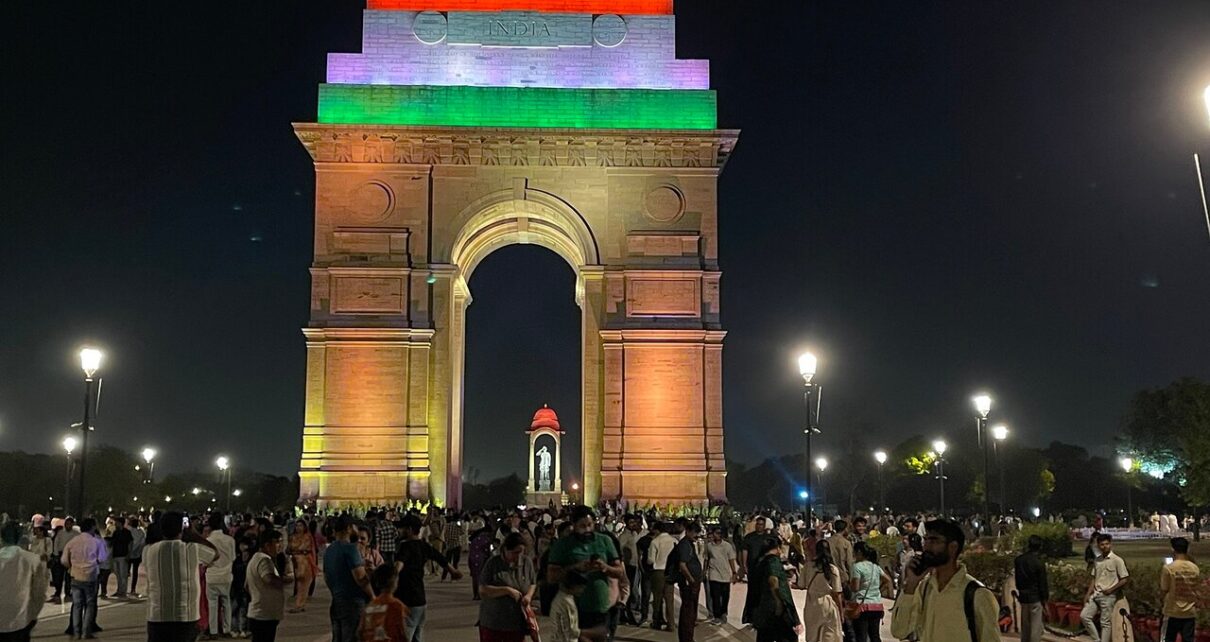By Spl Correspondent
Delhi after dark meant pubs, raves, coffee nights, and the occasional ice-cream run
for the longest time. But the capital has quietly begun rewriting its story. Today,
when the sun dips behind Lutyens’ columns and the city’s chaos softens, another
Delhi comes alive, its history glowing in warm lights, its monuments opening their
doors beyond sunset.
Night tourism is no longer just a promise. It’s here, and Delhi is slowly embracing it.
By day, Delhi is a riot of colours, flavours, and movement, markets buzzing, streets
choked, monuments thronged. But at night, the mood shifts. The air feels lighter, the
streets less hurried. For those who have long complained that “Delhi has nothing to
do post 6 pm,” the city is finally offering something new – lit-up tombs, immersive
sound-and-light shows, curated heritage walks, and museums that stretch their
timings into the night.
Imagine walking past Humayun’s Tomb at 9 pm, its red sandstone glowing like
embers against the night sky. Otherwise sitting under the domes of Safdarjung,
listening to stories of forgotten emperors. If watching the Qutub Minar lit up in
projections that map centuries of India’s cultural diversity.
This isn’t nightlife in the traditional sense, its heritage breathing after hours.
Monuments were synonymous with “last entry at 5 p.m. for decades. That perception
is now changing. Sunder Nursery and Humayun’s Tomb recently extended visiting
hours till 10 pm. Since 2019, Red Fort, Qutub Minar, and Safdarjung Tomb have
been part of an active initiative to open Delhi’s historic treasures to night tourism.
Delhi Tourism confirms the idea is simple: extend access, bring in light and sound
shows, and let people rediscover the city’s heritage differently. It’s not just for
tourists but also for office-goers chained to 9-to-5 routines, these hours mean
heritage is finally within reach.
The results are telling families, couples, students, and even senior citizens are joining
night walks, experiencing monuments without the daytime rush.
The first question anyone asks: Is it safe?
Organisers say yes. Places like Qutub, Safdarjung, and Sunder Nursery are well-lit,
secure, and patrolled by tourist police. Entry is restricted to designated zones,
ensuring both safety and atmosphere.
But beyond safety, the real pull is the experience. At Red Fort, the Jai Hind
immersive show retells India’s freedom struggle. Qutub Minar hosts projection
mapping that transforms its towering stone into a living canvas. Heritage walks
invite people to listen to forgotten tales under the stars. It’s history—minus the
textbooks.
The challenge, however, is awareness. Many Delhiites still don’t know monuments
are open after sunset. Timings online are inconsistent, and word-of-mouth often
comes as a surprise.
Heritage curators agree the government needs to communicate better and expand
beyond just the “big four.” After all, Delhi’s old havelis, bazaars, and even food
traditions are heritage too. Why limit night tourism to monuments alone?
What Delhi is slowly proving is that nightlife doesn’t have to be about neon lights and
DJ sets. It can be about walking through history under the stars, about pairing a late
dinner with a stroll past centuries-old arches, about experiencing the capital’s stories
in a new light—literally.
Delhi is not just a backdrop for Bollywood or politics. It is a living, breathing story.
And as monuments light up after dark, the city is finally inviting us to read it
differently.
So next time you think of “what to do in Delhi at night,” look beyond Hauz Khas or
raves. The real magic may just be waiting inside the quiet glow of sandstone,
whispering history into the night air.


